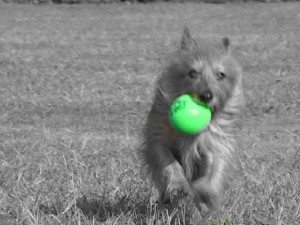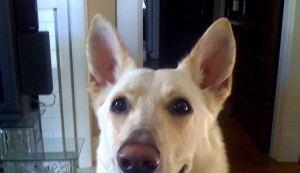Many of us know that several pet foods were recalled by the US Food and Drug Administration (FDA) in March 2007. As the investigation unfolded, additional brands and/or products were added to the recall. Most of the major brands were affected. How could so many different brands contain the same source of contamination?
Throughout many short and incomplete news reports, I noticed conflicting stories about the regulation of pet foods and the source of the contamination. Here are some facts about the regulation of pet foods and the pet food recall of March 2007.
The US Food and Drug Administration (FDA) is responsible for ensuring that human and pet foods are safe and properly labeled. This leads us to believe the FDA is regulating ingredients, but this is not necessarily so. Many ingredients such as the meats, poultry, grains and by-products are considered “safe” and do not require routine inspection or approval by the FDA.
The FDA does not inspect or regulate the source or quality of ingredients that make up the protein and fat in pet foods.
The FDA does regulate the production and distribution of food additives, chemicals and drugs that are included in pet foods. In addition, the FDA regulates the proper labeling of pet foods. The order by which ingredients are listed on the label and any health claims on the label fall under the jurisdiction of the FDA. Health claims on labels relate to claims that a particular food is helpful in the treatment or prevention of diseases.
The FDA labeling requirements are in concert with AAFCO (Association of American Feed Control Officials). AAFCO is a self-regulating organization whose members primarily consist of representatives of the pet food manufacturers.
AAFCO is not a government organization and does not have any enforcement capabilities; however AAFCO is considered an authority on which ingredients and nutrients should go into pet foods.
The Pet Food Institute (PFI) is another organization involved in pet food manufacturing. PFI is the “voice of pet food manufacturers”. The primary function of the 50 year old organization is media relations. PFI represents 97% of all pet food manufacturers.
Pet Food Recalls
In March 2007, FDA learned that some pet foods manufactured by Menu Foods were causing illness and death among cats and dogs.
The USA company, Menu Foods, manufactures and packages pet foods for many of the major pet food companies. The companies give Menu Foods their recipes and Menu Foods manufactures and packages the finished products.
The source of the contaminant was an additive used in many pet foods, wheat gluten. The FDA does regulate the production and distribution of food additives. The contaminant in the wheat gluten was melamine.
“Wheat gluten is a natural protein derived from wheat or wheat flour, which is extracted to yield a powder with high protein content. Pet food manufacturers often use wheat gluten as a thickener or binding agent in the manufacture of certain types of pet food. Melamine can be used to create products such as plastics, cleaning products, glues, inks, and fertilizers. Melamine has no approved use as an ingredient in human or animal food in the United States.”
The FDA recall included numerous Menu Foods products manufactured for many popular brands of pet foods. Other food manufacturers were affected by the recall too. Several companies voluntarily recalled some of their manufactured products.
The wheat gluten originated in China and was purchased by Chem Nutra, Inc., located in Las Vegas Nevada. Chem Nutra imported the wheat gluten for resale to various pet food manufacturers. Menu Foods was one of the larger animal feed manufacturers that purchased contaminated wheat gluten from Chem Nutra.
The U.S. Department of Agriculture (USDA) was also involved in the investigation because some farm animal feed and fish feed contained the tainted pet foods. The animals and fish consumed the feed and were processed for human consumption. Scientists determined the risk to humans who consumed meat from the farm animals was very low.
On February 6, 2008, a federal grand jury returned indictments against several key individuals and companies. Two Chinese nationals and their businesses along with Chem Nutra, Inc and key officers were included in the indictments. Menu Foods was not named in the indictments.
Update: In June 2009, Chem Nutra pleaded guilty in the pet food recall case.




